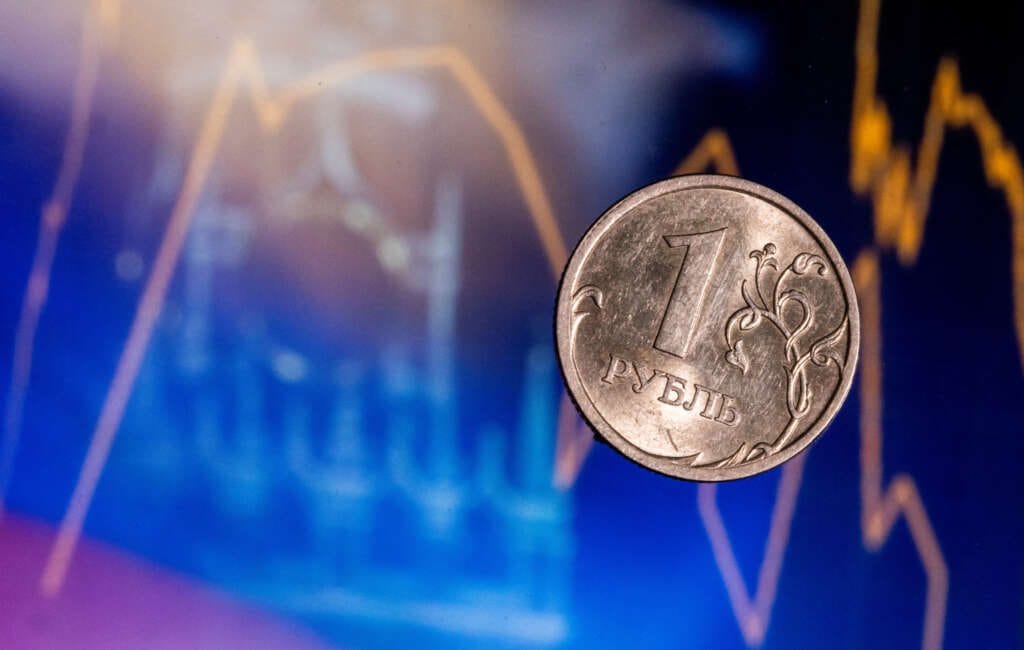
Rouble recovers slightly after slide past 100 vs dollar
(Reuters) -The Russian rouble weakened past the symbolic threshold of 100 to the dollar before recovering slightly in early trade on Tuesday, weighed down by foreign currency outflows and the country’s shrinking current account surplus.
The rouble’s last tumble into triple digits in August led the Bank of Russia to make an emergency 350-basis-point rate hike to 12% and authorities discussed reintroducing controls to buttress the currency.
By 0645 GMT, the rouble was 0.2% stronger against the dollar at 99.58, having hit 100.2550 in early trade, a more than seven-week low.
It had gained 0.6% to trade at 104.29 versus the euro and was steady against the yuan at 13.60.
Brent crude oil, a global benchmark for Russia’s main export, was down 0.5% at $90.24 a barrel, its weakest in almost a month, but still well above its 2023 average.
The Russian currency tends to come under pressure at the start of each month, after losing the support of a favourable month-end tax period that usually sees exporters convert FX revenues to meet local liabilities.
“Expensive oil and an increase in the key rate are improving the outlook for the rouble, but in the medium-term,” Promsvyazbank analysts said. They expected the rouble to make a short-lived move beyond 100 to the dollar in the absence of new support measures from the authorities.
‘PSYCHOLOGICAL BARRIER’
President Vladimir Putin’s economic adviser rebuked the central bank as the rouble slid to 101.75 per dollar in August, blaming its loose policy in a sign of growing internal discord.
“This level (100) is not a technical resistance, it’s an important psychological barrier,” said Alor Broker’s Alexei Antonov. “For now, everything speaks in favour of the rouble continuing to get cheaper.”
Following the August emergency hike, the central bank raised rates again in September to 13%. Analysts polled by Reuters expect the central bank, also grappling with stubborn inflationary pressure, to tighten monetary policy again at its next scheduled meeting on Oct. 27.
The rouble has charted a turbulent course since Russia invaded Ukraine in February 2022, slumping to a record low of 120 against the dollar in March last year before recovering to a more than seven-year high a few months later, supported by capital controls and surging export revenue.
Falling exports, hit by Western sanctions and shifting trade flows, combined with a recovery in imports this year has caused the rouble to weaken. Russia’s current account surplus shrank 86% year-on-year to $25.6 billion in January-August.
(Reporting by Lidia Kelly in Melbourne and Alexander Marrow in London; Editing by Kim Coghill, Stephen Coates and Andrew Heavens)


